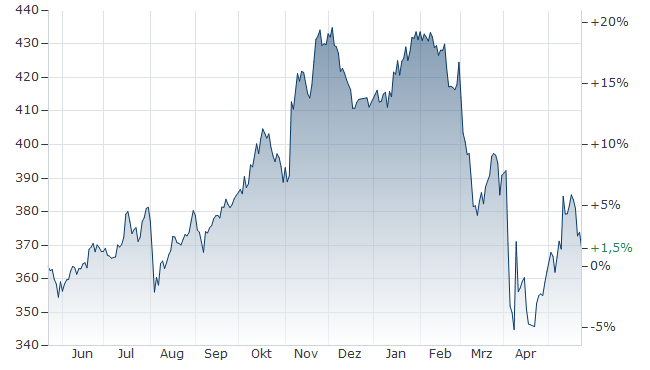Close Calls And Crashes: A Visual Exploration Of Airplane Safety

Table of Contents
Understanding Near Misses (Close Calls)
Defining a Near Miss in Aviation
A near miss, or close call, in aviation is an incident where an aircraft comes dangerously close to another aircraft, an obstacle, or the ground, without resulting in an accident. Crucially, it's a significant deviation from expected safety margins, highlighting potential weaknesses in the system. Reporting these near misses is vital; they serve as invaluable lessons, preventing future accidents. Mandatory reporting systems exist globally, encouraging pilots and air traffic controllers to document such events. This data is crucial for safety improvement.
-
Examples of near misses:
- Runway incursions (aircraft entering a runway without authorization).
- Near collisions mid-air (aircraft coming within dangerously close proximity).
- Low-altitude flight over terrain.
- Loss of separation between aircraft.
-
The role of human factors in near misses:
- Pilot error (fatigue, poor decision-making, miscommunication).
- Air traffic control errors (incorrect clearances, inadequate communication).
- Lack of situational awareness.
-
Technological factors contributing to near misses:
- Equipment malfunction (radio failure, navigation system errors).
- System failures (software glitches, sensor malfunctions).
- Inadequate maintenance.
Visualizing Near Misses
Data visualization plays a critical role in understanding the patterns and trends within near-miss data. By transforming raw data into accessible visuals, we can identify high-risk areas, pinpoint common causes, and ultimately improve safety procedures.
-
Examples of visual representations of near-miss data:
- Heat maps illustrating geographic areas with a high frequency of near misses.
- Bar charts showing the distribution of near misses by cause (human error, technical failure).
- Line graphs depicting trends in near-miss occurrences over time.
-
How visualizations highlight trends and patterns:
- Identifying recurring issues and implementing targeted solutions.
- Assessing the effectiveness of existing safety measures.
- Prioritizing areas for improvement.
Investigating Aircraft Accidents
The Role of Accident Investigation Boards
Following an aircraft accident, a meticulous investigation is conducted to determine the cause and contributing factors. These investigations are critical for learning from past mistakes and preventing future tragedies. Independent accident investigation boards are responsible for conducting these investigations. The "black box" – comprising the flight data recorder (FDR) and the cockpit voice recorder (CVR) – provides invaluable data.
-
The phases of an accident investigation:
- On-site investigation and evidence collection.
- Data analysis from the FDR and CVR.
- Witness interviews and testimony gathering.
- Reconstruction of the accident sequence.
- Publication of a final report with safety recommendations.
-
The different types of data analyzed:
- Flight data (speed, altitude, heading, etc.).
- Cockpit voice recordings (pilot and crew communication).
- Wreckage examination (physical damage to the aircraft).
- Weather data.
- Maintenance records.
Visualizing Accident Data
Visualizations are indispensable tools in accident investigation reports. They transform complex technical data into easily understandable narratives.
-
Examples of visual aids used in accident reports:
- Crash site diagrams showing the location of debris and impact points.
- 3D models of the damaged aircraft, illustrating the extent of the damage.
- Animations reconstructing the sequence of events leading to the accident.
- Charts and graphs representing various flight parameters.
-
How visualizations aid in communicating complex information:
- Making the accident sequence clearer to investigators, regulators, and the public.
- Facilitating the identification of causal factors.
- Improving communication of safety recommendations.
Technological Advancements in Airplane Safety
Modern Safety Systems
Modern aircraft are equipped with a suite of advanced safety systems that significantly reduce the risk of accidents.
-
Examples of specific systems and their functions:
- Traffic Collision Avoidance System (TCAS): Alerts pilots to potential mid-air collisions.
- Ground Proximity Warning System (GPWS): Warns pilots of dangerously low altitude.
- Enhanced Ground Proximity Warning System (EGPWS): A more sophisticated version of GPWS.
- Advanced weather radar: Provides detailed information about weather conditions.
- Automatic Dependent Surveillance-Broadcast (ADS-B): Improves situational awareness by broadcasting aircraft position data.
-
How these systems help prevent accidents and near misses:
- Providing timely warnings of potential hazards.
- Assisting pilots in making informed decisions.
- Automating certain safety-critical functions.
The Future of Aviation Safety
The quest for enhanced airplane safety is ongoing, fueled by continuous innovation.
-
Potential benefits and challenges of new technologies:
- Autonomous flight systems: Potential to reduce human error, but raises concerns about system reliability.
- Advanced data analytics: Can identify safety risks and predict potential failures, but requires robust data collection and analysis.
- Predictive maintenance: Aims to prevent failures before they occur, but necessitates advanced sensor technology and sophisticated algorithms.
- Improved communication systems: Enhanced communication between pilots, air traffic control and maintenance personnel.
-
How these advancements may impact the future of air travel safety:
- Increased safety levels and reduced accident rates.
- More efficient air traffic management.
- Greater resilience to system failures.
Conclusion
The exploration of close calls and crashes reveals a continuous cycle of learning and improvement within the aviation industry. Proactive safety measures, thorough accident investigations, and technological advancements work in tandem to ensure high standards of airplane safety. By analyzing near misses and leveraging data visualization, we gain valuable insights that lead to safer skies. We must continue to invest in research, technology, and training to further enhance airplane safety and ensure safe air travel for generations to come. To learn more about improving airplane safety, explore resources from organizations like the FAA (Federal Aviation Administration) and ICAO (International Civil Aviation Organization). Let's work together to continue improving airplane safety for a safer future of air travel.

Featured Posts
-
 Tracking The Net Asset Value Of The Amundi Dow Jones Industrial Average Ucits Etf
May 24, 2025
Tracking The Net Asset Value Of The Amundi Dow Jones Industrial Average Ucits Etf
May 24, 2025 -
 Couple Fights Over Joe Jonas His Response Goes Viral
May 24, 2025
Couple Fights Over Joe Jonas His Response Goes Viral
May 24, 2025 -
 Dax Falls Below 24 000 Frankfurt Stock Market Closing Losses
May 24, 2025
Dax Falls Below 24 000 Frankfurt Stock Market Closing Losses
May 24, 2025 -
 Ferraris New Bengaluru Service Centre What To Expect
May 24, 2025
Ferraris New Bengaluru Service Centre What To Expect
May 24, 2025 -
 Kazakhstan To Bjk Cup Final After Australia Defeat
May 24, 2025
Kazakhstan To Bjk Cup Final After Australia Defeat
May 24, 2025
